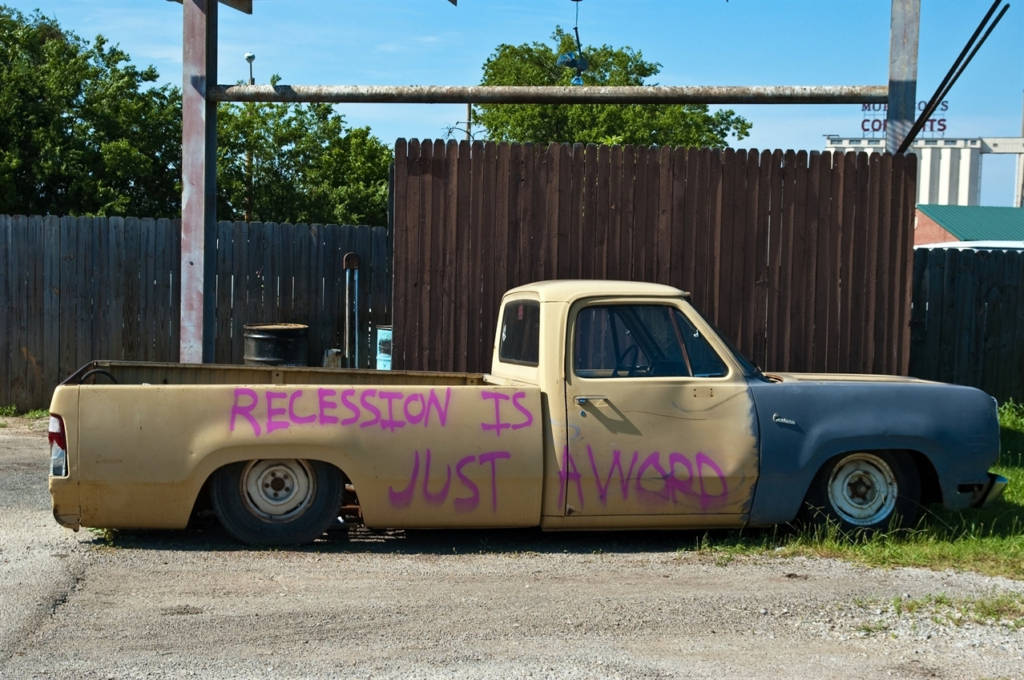Picking Apart Buzz Words: Inequality, Poverty, Income, Recession, Mobility

We live in an age of rapid information, so much so that even those of us reading neighborhood, urban planning and community development literature and data all day get turned around. For instance, has poverty grown? Or just the concentration of poverty? Has the economy and housing market bounced back? If so, is income rising? How did the recession impact Chicago?
The recession may have ended in 2009 but, as FiveThirtyEight highlights, for many people there hasn’t been a recovery and family income and wealth has decline, student debt increased and retirement funds remain stagnant.
Chicago and Illinois continue to trail behind the rest of the U.S. when it comes to poverty growth and income stagnation, which is a serious challenge given that the cost of living here is not stagnant. According to the Social Impact Research Center, Chicago’s median household income in 2014 was $48,734—quite a bit less than the pre-recession median income in 2007 of $51,954—and poverty has grown from 20.5 percent to 22 percent in the same period.
While much of this downturn is driven by the national economic recession, Chicago and Illinois are not recovering as quickly as other places in the U.S. The Bureau of Labor Statistics released data in August 2015 that the Chicago metropolitan area had an unemployment rate of around 5.6 percent, not seasonally adjusted, or a ranking of 36 out of the 51 large metropolitan areas. While, for instance, housing indicators are showing that foreclosure activity is at or below 2006 levels in the Chicago region, the economy is still lagging behind our peer regions.
Recent chatter in the media suggests that the important issue is where poverty is located and how that is playing out across cities and regions. Paul Jargowsky’s recent report, “Architecture of Segregation: Civil unrest, the concentration of poverty, and public policy,” has shed light on the tremendous increase in high-poverty neighborhoods, or neighborhoods where more than 40 percent of the households are living in poverty. This threshold, commonly referred to as a “concentration of poverty,” started increasing before the recession (so don’t jump to that for an explanation) and is strongly correlated with race. Across the U.S., high-poverty neighborhoods have grown by 76 percent since 2000.
So, why should we be more concerned about poverty that is concentrated, as opposed to when it is, for instance, evenly distributed across households in a region? Elizabeth Kneebone at Brookings Institution calls living in concentrated poverty the “double burden,” where poor families have to manage their own poverty and lack of living wages as well as the disadvantages of those around them. This Think Progress article quotes Patrick Sharkey, a sociologist at New York University, as saying: “All of the challenges that come with living in poverty become amplified.” The article continues:
And it’s not because the people in those neighborhoods have some sort of ingrained character flaws; it’s because of that downward spiral. Businesses pull up investments and are reluctant to make new ones. Important community institutions, such as churches and after school programs, get eroded. Schools deteriorate. Violence can emerge.
So how does this look in Chicago?
Poverty concentration rising in Chicagoland (Data from Paul Jargowsky’s Architecture of Segregation report)Create column charts
In Chicago, the concentration of poverty amongst black households increased 8.1 percent between 2000 and 2009-2013 and 3.6 percent amongst Latino households during the same period. As Jargowsky notes:
Concentration of poverty is also a choice, whether we want to admit it or not. Concentration of poverty is the product of larger structural forces, political decisions, and institutional arrangements that are too often taken for granted. Our governance and development practices ensure that significant segments of our population live in neighborhoods where there is no work, where there are underperforming schools, and where there is little access to opportunity.
In the Chicago region our policies around suburban and exurban development and exclusionary housing have led to further concentrations of poverty and to situations like this one recently in Deerfield, Ill., around a proposed affordable housing development. Until we begin to integrate affordable housing, expand school and job access to all residents and invest in our community infrastructure in a strategic manner that favors infill redevelopment and our existing infrastructure, the region will continue to lose population and lag.
Essentially, we are becoming poorer and that poverty is located in particular areas. Not all is lost, as Susan Greenbaum notes in her article “Concentrated poverty is the new urban panic:” there is significant social capital in high-poverty neighborhoods that can be leveraged to improve neighborhoods. These challenging trends demand innovative, bold strategies that balance community investment, job creation and housing mobility.
While the concentration of poverty has many negative impacts on communities, often the solution is to promote relocation and housing mobility, allowing low-income households to leave distressed communities. I am eager to carve out a middle of the road strategy that balances the need to expand housing choices—which may mean providing mobility counseling and assistance to families interested in relocating to low-poverty communities—with policies that support reinvestment in schools, roads, services in distressed neighborhoods.
The Metropolitan Planning Council (MPC) has supported programs on both sides of the coin, such as the Regional Housing Initiative and Grow Chicago efforts that support the construction of affordable housing near transit and amenities and the regional voucher pilot, which provides mobility counseling to Housing Choice Voucher families to help them move to low-poverty areas of opportunity.
We need a both/and strategy that creates strong, accessible communities where all Chicagoans can succeed. We’re excited that the U.S. Dept. of Housing and Urban Development released an updated Affirmatively Furthering Fair Housing Rule this year and hope that more and more local, regional and state governments will use their resources and policies to create balanced communities.
